Echinacea is a genus of flowering plants in the Daisy family (Compositae). Commonly called purple coneflowers, there are nine different species of Echinacea with three of these species used for medicinal purposes: Echinacea purpurea, E. angustifolia, and E. pallida. Echinacea grows in the wild in the Rocky Mountains of the United States and is cultivated for use in dietary supplements.
Echinacea Parts and Preparations
Each part of the Echinacea plant contains different active compounds that provide distinct benefits. The roots of Echinacea are rich in alkylamides, which activate macrophage activity and support healthy immune responses.*2, 3 Echinacea root can also be standardized to provide a guaranteed amount of echinacosides.4 The aerial parts (flowers and leaves) of Echinacea contain arabinogalactans and other polysaccharides that are best for ongoing immune support.*5, 6
The benefits of Echinacea products depend on the parts of the plant used, the standardized compounds, and the overall formulation. Combining Echinacea with other ingredients may offer greater advantage than dosing Echinacea alone. Echinacea and Hydrastis canadensis (goldenseal), for example, support the immune response in different, but complementary ways.*7 A formulation of Echinacea purpura, Thujaoccidentalis, and Baptisia tinctoria has a long history of use in Europe and a wealth of recent research to validate its immune support.*8, 9, 10
Echinacea Benefits
Echinacea is most extensively studied for its ability to support healthy immune function.* Echinacea is categorized as an immune modulator—it stimulates phagocytic activity while simultaneously modulating cytokine secretion.*11 Mechanistic studies show that Echinacea supports respiratory tract health.*12 When Echinacea is used as a single intervention, efficacy studies have been mixed. A 2014 Cochrane review of 24 randomized controlled trials and 4631 participants concluded that Echinacea offers some benefit for immune tonification but no significant benefit for temporary immune support.*13 In contrast, a 2015 meta-analysis of six clinical trials and 2458 participants found significant benefits of Echinacea over placebo at supporting immune and respiratory health.*14 When Echinacea is used in formulation with other ingredients, results are more impressive.15,16 The combination of Echinacea, Thuja, and Baptisia (mentioned above) has shown efficacy for temporary immune support in numerous clinical trials and has been used as an adjunctive therapy along with standard care.*17, 18, 19
Echinacea Dosing
Dosing recommendations for Echinacea vary widely, depending on the preparation, standardization, formulation, delivery method, and intended purpose. Dosages are generally lower for ongoing support and higher for temporary support.*
One successful clinical trial administered an alcohol tincture at a “typical” dose of 0.9 mL three times per day for ongoing support and increased the dosage frequency to five times per day for acute support.*17 Substantially lower dosages of Echinacea appear to be effective when it is combined with other ingredients.* For example, a formulation of Echinacea, Thuja, and Baptisia has
demonstrated efficacy in clinical trials at a total dosage of dry herbal extract blend of less than 60 mg per day.*10
Echinacea Interactions
Isolated case reports have raised concerns about the potential for Echinacea to aggravate or activate the autoimmune response.18 The validity of these concerns has been challenged, however, because the alkylamides in Echinacea suppress the cellular immune response.*19
REFERENCES
- Aarland RC et al. Pharm Biol. 2017;55(1):649-56.
- Chen Y et al. J Nat Prod. 2005;68(5):773-6.
- Cech NB et al. Int Immunopharmacol. 2010;10(10):1268-78.
- Kuang R et al. Planta Med. 2009;75(14):1499-1504.
- Capek P et al. Int J Biol Macromol. 2015;79:388-91.
- Göllner EM et al. Planta Med. 2013;79(2):175-80.
- Rehman J et al. Immunol Lett. 1999;68(2-3):391-5.
- Wüstenberg P et al.Adv Ther. 1999;16(1):51-70.
- Hauke W et al. Chemotherapy. 2002;48(5):259-66.
- Naser B et al. Phytomedicine. 2005;12(10):715-22.
- Hudson JB et al. J Biomed Biotechnol. 2012;2012:769896.
- Šutovská M et al. J Ethnopharmacol. 2015;175:163-71.
- Karsch-Völk M et al. Cochrane Database Syst Rev. 2014;(2):CD000530.
- Schapowal A et al. Adv Ther. 2015;32(3):187-200.
- Ross SM et al. Holist NursPract. 2016;30(1):54-7.
- Ross SM et al. Holist NursPract. 2016;30(2):122-5.
- Jawad M et al. Evid Based Complement Alternat Med. 2012;2012:841315.
- Lee AN et al. Arch Dermatol. 2004;140(6):723-727.
- Ardjomand-Woelkart K et al. Planta Med. 2016;82(1-2):17-31.



